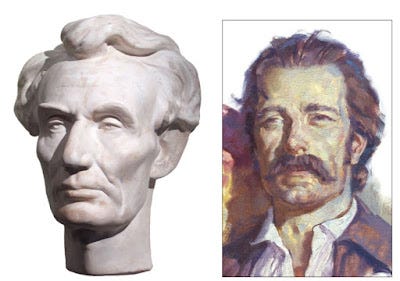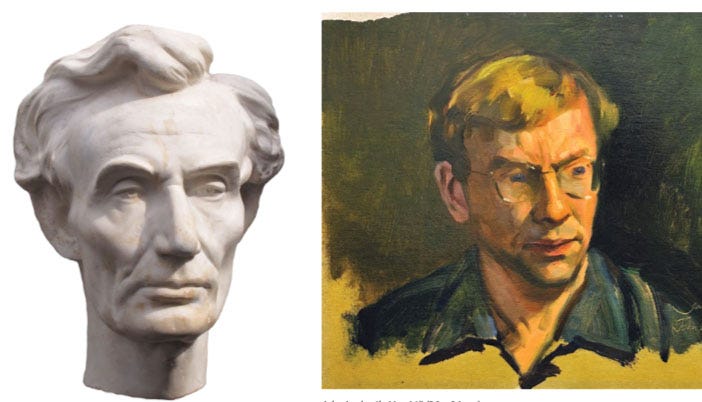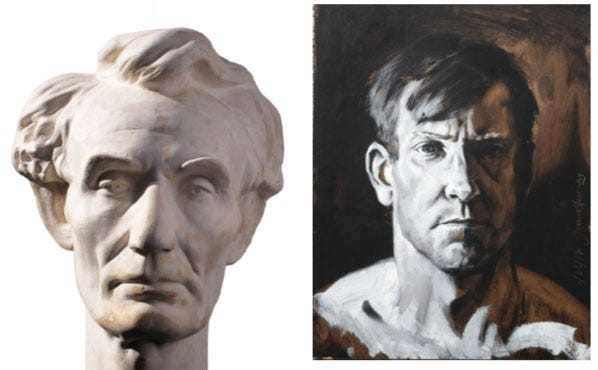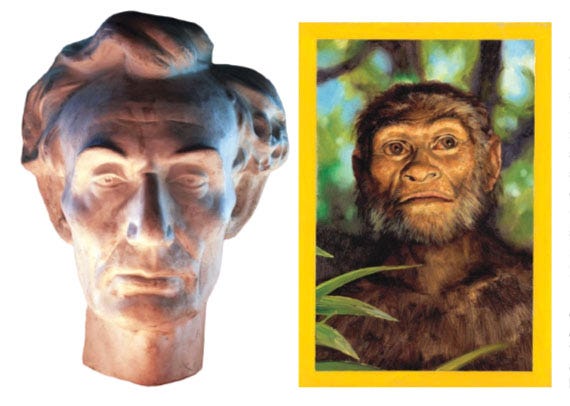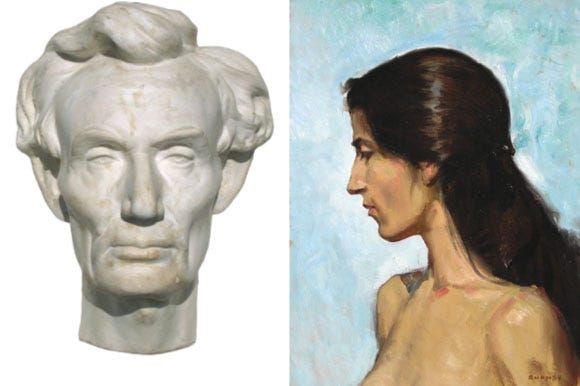Most photographers learn this stuff during their training, but it’s rare to hear about it in art school.
1. Three-Quarter Broad
Most portraits have light coming from in front of the model, and a little off to the side. The main or “key” light strikes three-quarters of the visible form, leaving one-fourth of the form on the far side of the face in shadow. Typically, the key light is elevated from the subject’s line of sight. It’s high enough to leave a shadow under the nose and chin, but low enough to get some light into both eyes. The light casts a shadow from the nose onto the far cheek, leaving a lighted triangle on that shaded cheek. If the face is turned slightly to one side, the near or “broad” side of the face is the one receiving the major illumination, which is why it’s called broad lighting.
2. Three-Quarter Short
Alternately, light can come from the farther, foreshortened, or “short” side of the face. It’s still three-quarter lighting if the tell-tale lighted triangle appears on the shaded side of the face. This time the lighted triangle is on the cheek closest to the viewer. Short lighting can help make a face look thinner. Some photographers use the term “Rembrandt lighting” more generally for any three-quarter lighting, either broad or short. Rembrandt himself used both broad and short lighting. Both of these lighting arrangements are flattering and unobtrusive, good reasons why portrait painters and photographers have used them almost universally.
3. Side or Split Lighting
Light that comes straight from the side is called side or split lighting. The dividing line or terminator between light and shadow runs along the centerline of the face. It’s not a light arrangement that you see too often, but it has its purpose, especially
in film, comics and illustration. It places equal importance on the light side and the shadow side, so it can convey the sense that the subject is a doppelganger, a person whose soul is a battleground of equal and opposing forces. Sometimes two equal light sources shine onto each side of the face without quite overlapping, leaving a dark core shadow running down the forward-facing planes in the center of the face.
4. Top Lighting
In top lighting, the light comes straight down onto the head from above. It occurs often under a streetlight, a ceiling light or a noonday sun. The forehead and the nose intercept most of the light. These parts of the face carry relatively little expression. The mouth and eyes, the chief agents of sympathy, are lost in shadow. As a result, the subject’s emotion is masked. The effect can be threatening, mysterious or inscrutable. This lighting arrangement is ideal for a dramatic entrance of a dangerous character or for conveying a feeling of cool detachment.
5. Light from Below
Strong light usually doesn’t come from below, so when you see it, it grabs your attention. We tend to associate warm-colored under-lighting with firelight or theatrical footlights, which can suggest a magical, sinister or dramatic feeling. In modern times a cool light from below suggests a cellphone or a computer. Faces that are familiar to us (family, friends and celebrities) nearly always appear lit from above. We hardly even recognize them when we see them with the light shining upward on their features.
6. Frontal Lighting
In frontal lighting, the light travels straight toward the form from an angle close to the viewer’s line of sight. The planes get darker as they turn away, and the planes facing us are lightest. Frontal lighting tends to flatten the form, and it emphasizes the two-dimensional design instead of the volume. It can give the picture a striking poster-like impact. It’s a good lighting to choose if you want to emphasize color or pattern. Frontal lighting is one of the few times when outlines actually appear in real life. The outline is really the thin fringe of shadow that appears at the very edge of the form.
The last are two of my favorites, rim lighting and contre jour (which we covered in a previous post).
Keep reading with a 7-day free trial
Subscribe to Paint Here to keep reading this post and get 7 days of free access to the full post archives.





